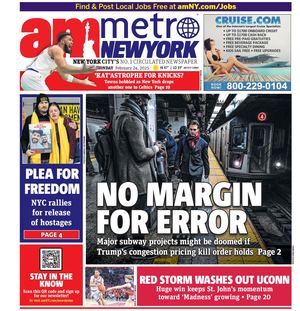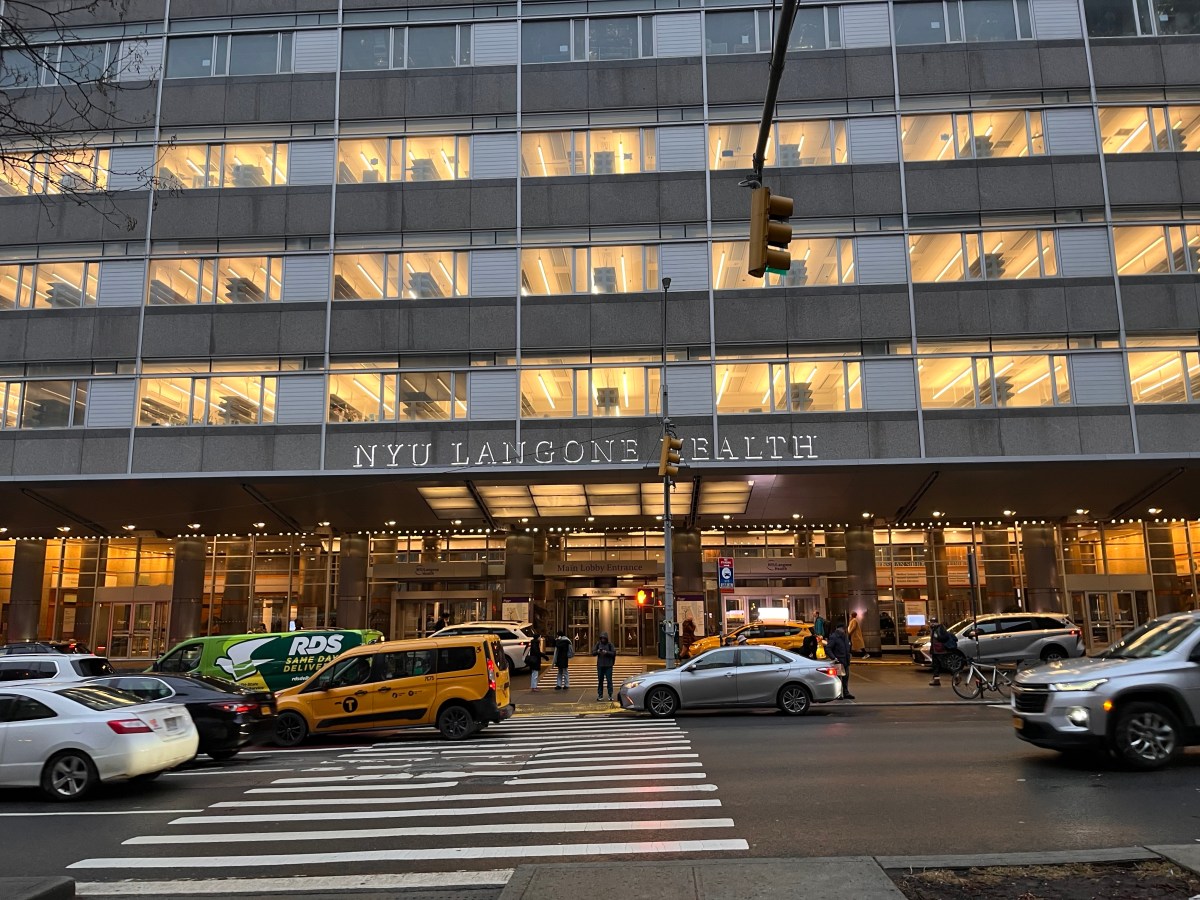BY LINCOLN ANDERSON | I’ve wanted to write a column on biking in the city for a while now. Somehow, though, despite thinking about it a lot, I always end up putting it on the back burner each week as something more pressing invariably comes up.
Yet now we are facing a crisis as the number of cyclists’ deaths so far this year in the Big Apple has already spiked to 18 — nearly double the 10 deaths for all of last year. Cyclist injuries are also on the rise.
I’ve always wanted to write a cycling column focusing on the fun and freedom of riding a bike in the city. But the mounting deaths are a grim reminder of just how dangerous it remains to pedal a bike on Gotham’s mean streets.
That’s why the bike lanes are so crucial. I definitely “stay in my lane.” I feel safe in the lanes. I can ride a CitiBike from my work in Downtown Brooklyn to my home in East Midtown Manhattan, 4.6 miles, in just over a half hour — and the entire trip is in a protected bike lane: Jay St. to the Manhattan Bridge, then up Allen St. and First Ave.
It’s faster for me than commuting by subway — by 15 minutes.
Biking over the bridge is great cardio, and a side benefit is I find I think things through while doing it. Somehow by the time I reach the span’s midpoint, things on my mind resolve, and then I’m happily flying down the other side.
Of course, there’s also the health benefit, both physical and mental. Small annoyances fade much more quickly after a good bike ride, and your body feels energized. Just the act of riding feels liberating — because it is.
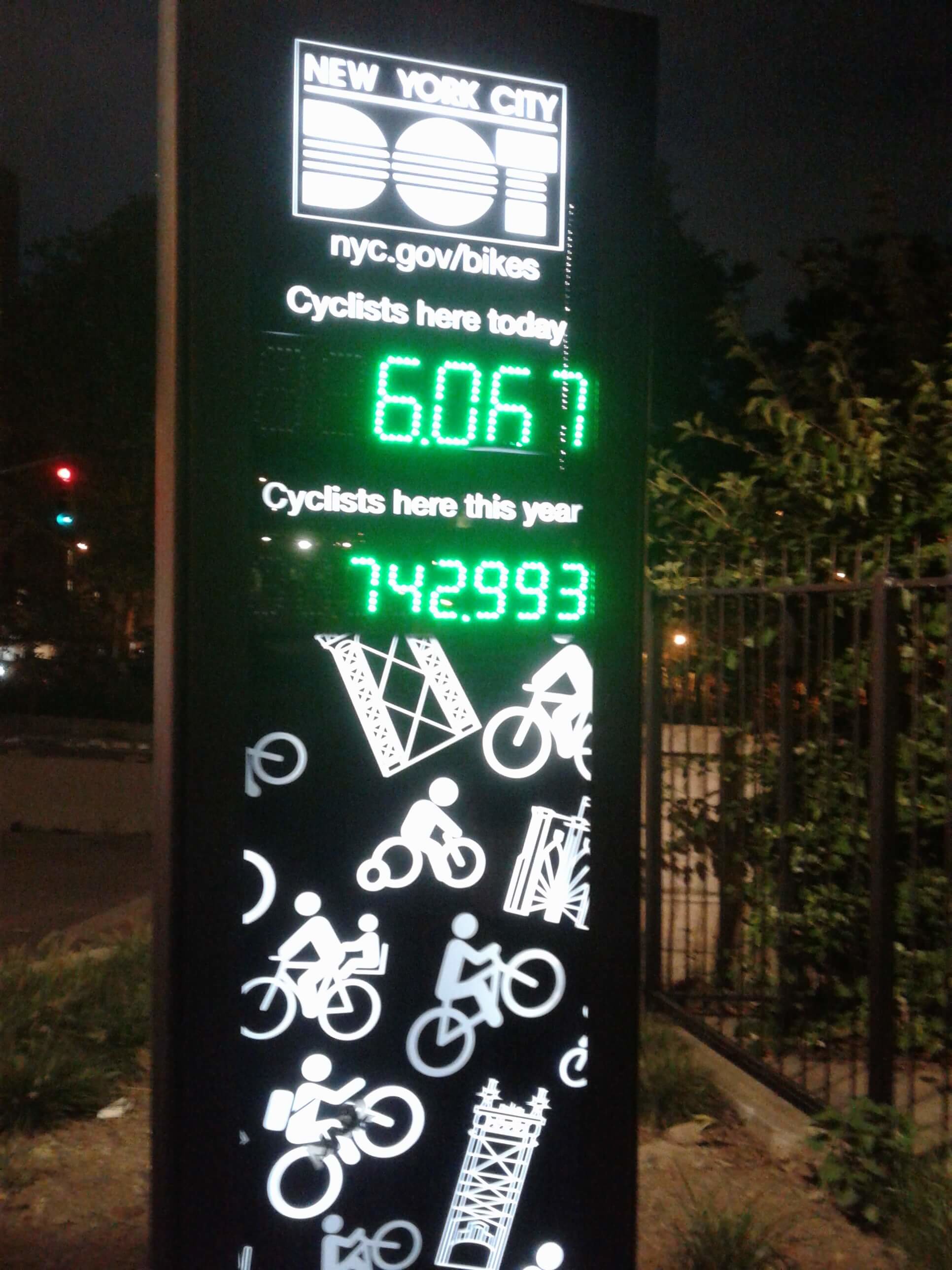
At the bottom of the Manhattan Bridge there’s a kiosk with an L.E.D. display showing how many cyclists have used the bridge so far this year — well over 600,000 — and how many each day, usually somewhere around 7,000 or so in the warm weather, I think. (Somehow, I never actually seem to be riding by it at 11:59 p.m. to check the day’s final tally.)
The bike lane on Allen St. is one of my favorites. At one point, the lane actually veers up onto the mall and you’re riding along a landscaped path with flowers and tall grasses along the sides while dodging the occasional low-hanging branch and you sometimes can even hear crickets — in the concrete jungle. It’s like a little, refreshing, meditative nature ride, and all the while you’re totally safe from traffic, up on the mall.
But if you really want to hear crickets, try the Hudson River bikeway. I heard a virtual cricket concert there riding along the path’s Chelsea section this past Friday evening.
No question, the bike lanes have increased cyclists’ safety. Just look at the relatively new two-way lane on the east side of Chrystie St. on the Lower East Side/Chinatown, which I take on my way to work. Before, there were separate one-way bike lanes on each side of the street, and the Downtown one ran right past all kinds of lumber stores and beer outlets, with forklifts constantly backing up into the bike lane. Now, with the two-way lane on the east side of the street, the cyclists are safe — but those riding Downtown have to go slowly and ring their bells so crossing pedestrians look out for them.
Granted, though, the lanes aren’t perfect. Sometimes you get people going the wrong way in them — bikers, skateboarders, delivery guys on e-bikes — and pedestrians using them as a sidewalk extension. If the lane is protected by a row of parked cars, you always still can get “doored,” so you have to ride cautiously. And, even if I’m in a bike lane, I’m always looking over my shoulder when I go through an intersection to check for turning cars.
Most drivers, I find, though, are pretty considerate, to be honest. Especially lately, maybe because of the awareness over cyclist fatalities, I’m finding a lot of drivers and cabbies are stopping before making their left turns, going out of their way to let cyclists go by first before completing their turns. As I pass, I usually nod my head or flick my fingers on my right hand a bit while not letting go of the handlebar, to thank them for letting me go first.
I grew up in New York City before there really were any bike lanes. Sure, there were the Central Park and Prospect Park loops on the weekends or after work, but that was it. Looking back now, I sort of can’t believe I actually rode around town on the streets with traffic.
One summer when I was in college, I was even a bike messenger, as that seemed like a cool way to make some spending money for the school year. I remember one image: A messenger who wore a lacrosse helmet and shoulder and kneepads for safety. As much as protection, it was a statement, too — that it’s a war out there.
I, though, didn’t last. After a few days, I literally was terrified to go back out on the streets. I just sensed it was going to end badly because I was out there for hours at a time, pedaling hard in the summer swelter, getting tired — plus my bike wasn’t even that great, just my Dad’s three-speed. No one really wore helmets back then. It just seemed way too dangerous. But now, with the bike lanes, it would be a piece of cake.
I remember, another summer, biking up Fifth Ave. and Adam Purple — the Lower East Side “gardens godfather” — biking past me and handing me one of his rolled-up fliers for some protest or be-in. He was likely heading up to Central Park to scoop up a fresh load of horse poop to fertilize his Garden of Eden.
Admittedly, though, the lanes can get jammed up, such as by slower cyclists. Robyn Hightman, a 20-year-old bike messenger, was reportedly riding outside the bike lane at Sixth Ave. and 23rd St. in Chelsea, when she was fatally hit by a truck. Other messengers said that it’s common at that spot to zip outside the lane for a block or so, then duck back into it.
I found myself doing the same thing about a week later at 23rd St. and First Ave. when a pack of cyclists in front of me were too slow. But I really looked over my shoulder for traffic as I was doing it, and luckily there wasn’t any on the street at the time.
While I really do like the bike lanes, I am not a big fan of “sharrows,” which bikes and cars supposedly can “share.” These are totally unprotected areas that cars can drive onto — so it’s basically at the driver’s discretion whether she goes into them. There are sharrows near the Queens Midtown Tunnel that I ride in, but I really don’t like doing it. Obviously, the sharrows are there because the Department of Transportation doesn’t want to “block” drivers from getting to their precious tunnel, but it’s simply dangerous for cyclists. If I’m feeling tired or just leery, I ride my bike slowly along the sidewalk (which is never too crowded) until I get to 34th St. and Second Ave., where the protected bike lane begins.
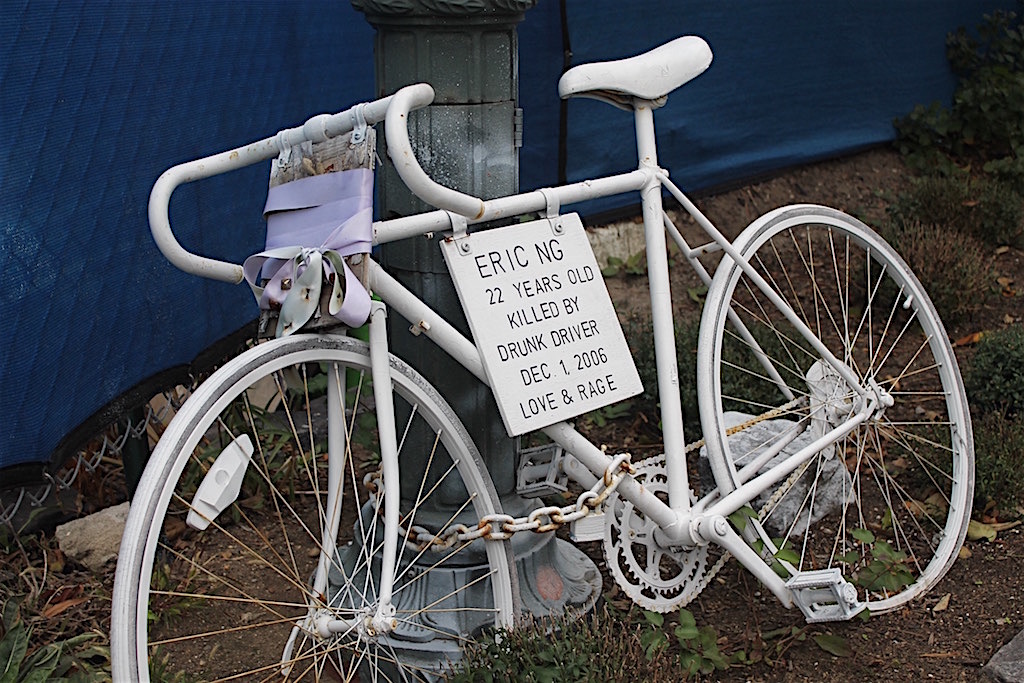
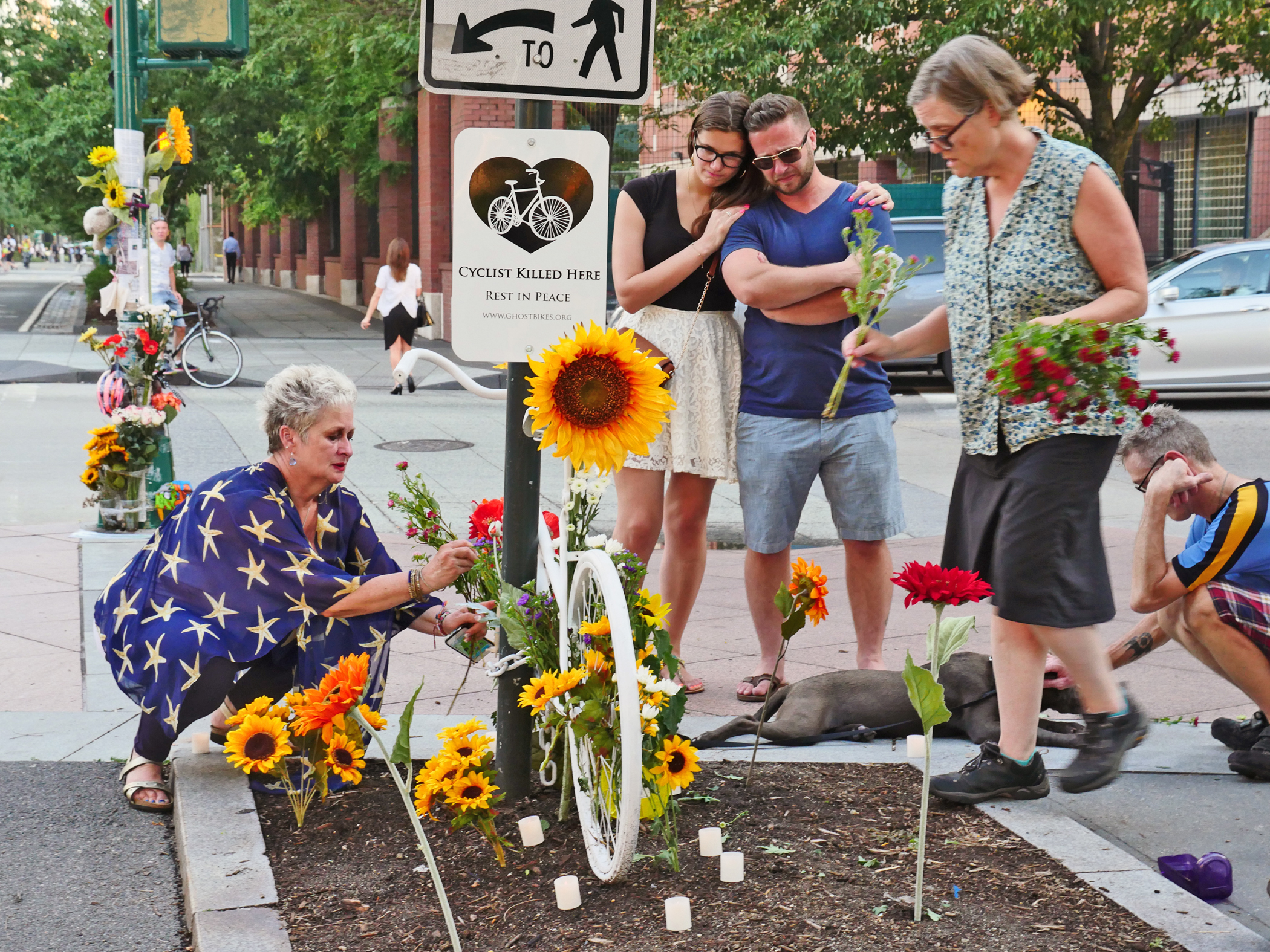
“Staying in my lane,” so to speak, I really haven’t had any problems. There was one time, though, I was really flying up Allen St. on a CitiBike (albeit in a “sharrow” zone that always puts me on high alert) and zooming across the E. Houston St. intersection, but then something told me to slow down. And it was a good thing, because someone had thrown down a French gate-style metal fence right in the bike lane, and if I had hit that, it would have been a mess. In general, a good rule — even with bike lanes — is to know your route and never ride out of control.
Yes, sure, I see some cyclists out there who blow through red lights. Personally, I always stop at the special bicycle stoplights on 14th and 23rd Sts. along First and Second Aves. Again, it’s just safer. The only time I really make bad moves is if I’m rushing, and usually I regret it.
The Friday night after Hightman’s tragic death, I was in Chelsea for an offbeat dinner party I regularly go to. Afterward, I went by the white “ghost bike” memorial to her by the curb on Sixth Ave. It was festooned with flowers, messages, candles. I spoke to a young woman who had also come by to pay her respects. Taking a working break from college in Europe, she lives in Brooklyn and bikes to East Midtown every day, 8 miles each way.
Glancing over at the sidewalk, she said in her country, there would be a wide bike lane there and it would be raised above street level to protect it from traffic.
I said something about New York City always valuing speed and business, which maybe is why cars are prioritized.
“This country is great, but in some ways this country sucks,” she said, sadly. “It’s pissing on the little guy,” she said, of cars mowing down cyclists and the lack of more protected spaces for biking.
I reassured her that while we are not there yet, we’re getting there, that young people, especially, want to be able to bike safely in the city, and that, gradually, it will happen.
We touched on the fact — probably I brought it up — that Hightman was killed after she veered out of the bike lane, and I said I never do that — only, of course, to actually do it myself a few days later. That’s because, she explained, I have a “reverse commute,” so the lanes I’m riding in aren’t as crowded. Yup, she was right.
(The dinner party’s hostess later told me that she had seen the scene after Hightman’s death — the truck was still there — and that the cyclist actually had been trying to go from the right side of the avenue to the left side, where the bike lane is.)
A pedicab driver came biking by with two fares, calling out to them, explaining the white ghost bike, “…and her name was Robyn.”
The young Euro biker and I eventually said goodbye to each other.
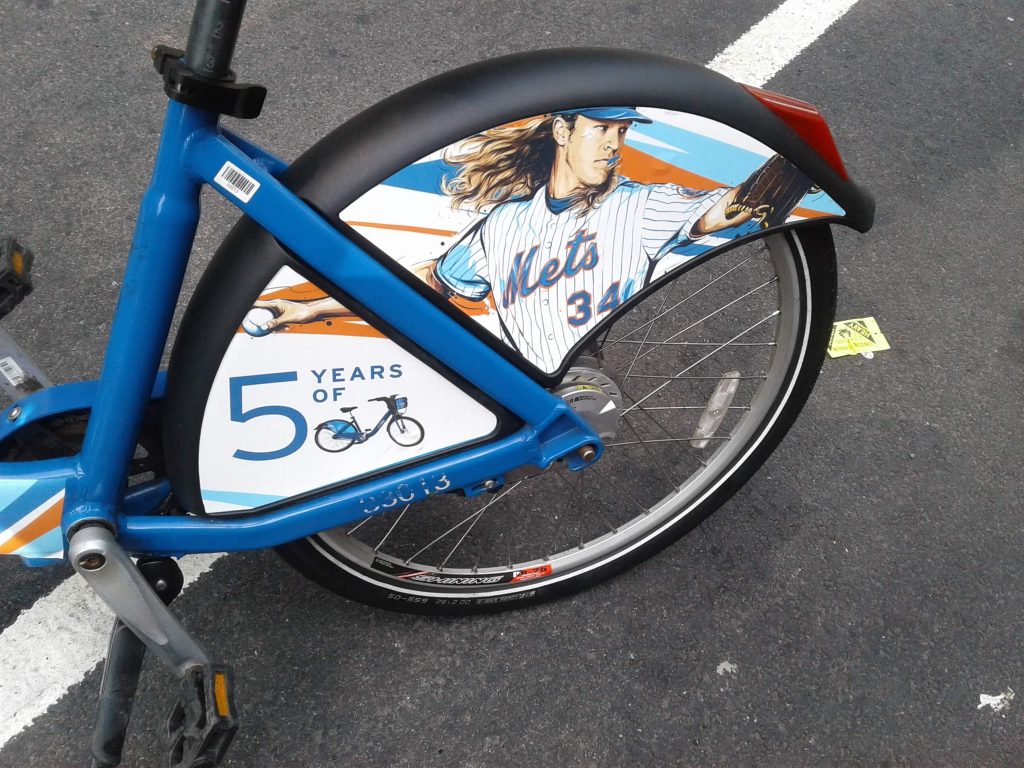
As usual, I pedaled home on a CitiBike, along the new protected crosstown bike lane on 26thSt. There’s a ghost bike there, too, just past Eighth Ave. A small sign notes it’s for Dan Hanegby, 36, who was killed by a bus in June 2017. His death — the first of a CitiBike rider — led to the creation of that crosstown bike lane and also one on 29th St., which I also use when I’m going to the Friday night party.
Sadly, Hanegby died on an unsafe street that today — because of his tragic death — I ride on in safety.
We should all be able to bike safely.
Although I strongly support bike lanes, I totally empathize with Villagers who feel the new crosstown ones on 12th and 13th Sts. are misplaced on their narrow side streets. There really should be community buy-in. At the same time, these bike lanes are great for cycling because they are wide, with a healthy buffer zone. I frequently use the one on 12th St. when I’m biking home from visiting a friend at Westbeth.
In addition to the bike lanes, CitiBikes also make cycling safer — because they are pretty slow, sturdy, with fat tires that roll right over potholes and excellent brakes. Hard to believe, but I’ve been a CitiBike member for nearly six years now. It took a bit of getting used to riding on what, at first, felt like a clunky gym exercise bike, but I was soon riding them everywhere.
According to my account, I’ve logged (or slogged?) 1,709 CitiBike trips, traveling an estimated 2,868 miles — or 100 miles more than the distance from New York City to Los Angeles. So, basically, I’ve biked across the country. In doing so, my account info tells me, I have not spewed 2,329 pounds of carbon-dioxide emissions into the atmosphere. So I guess that’s my little part of a Green New Deal.
We might not be Copenhagen yet, in terms of a safe bicycling culture. But I think we’ll get there. More bike lanes will make cycling in the city safer. Cyclists must do their part, too, by riding safely and deferring to pedestrians — especially mobility- and balance-challenged elders, who are fragile and can be badly injured in falls.
Meanwhile, things change. You don’t see messengers riding around decked out in “armor” anymore. Adam Purple, that combustion engine-hating paragon of pedal power…well, it turned out he had a very dark side as a sex abuser. And now we have the ever-growing bike-lane network and bike-sharing. And we have a City Council speaker who has vowed to “break car culture.”
But we still have cyclists dying — more than before. Many of the deaths have been in Brooklyn on streets without bike lanes. In response, at the end of last month, the mayor announced the city would create 10 “bike priority districts” in Brooklyn and Queens, plus add 30 miles of new protected bike lanes per year — up from the previous 20 per year. Obviously, that’s going to have a huge impact.
As the saying goes, and for safety: “Stay in your lane.”
Anderson is the editor in chief of The Villager, Chelsea Now, Downtown Express and Manhattan Express.
